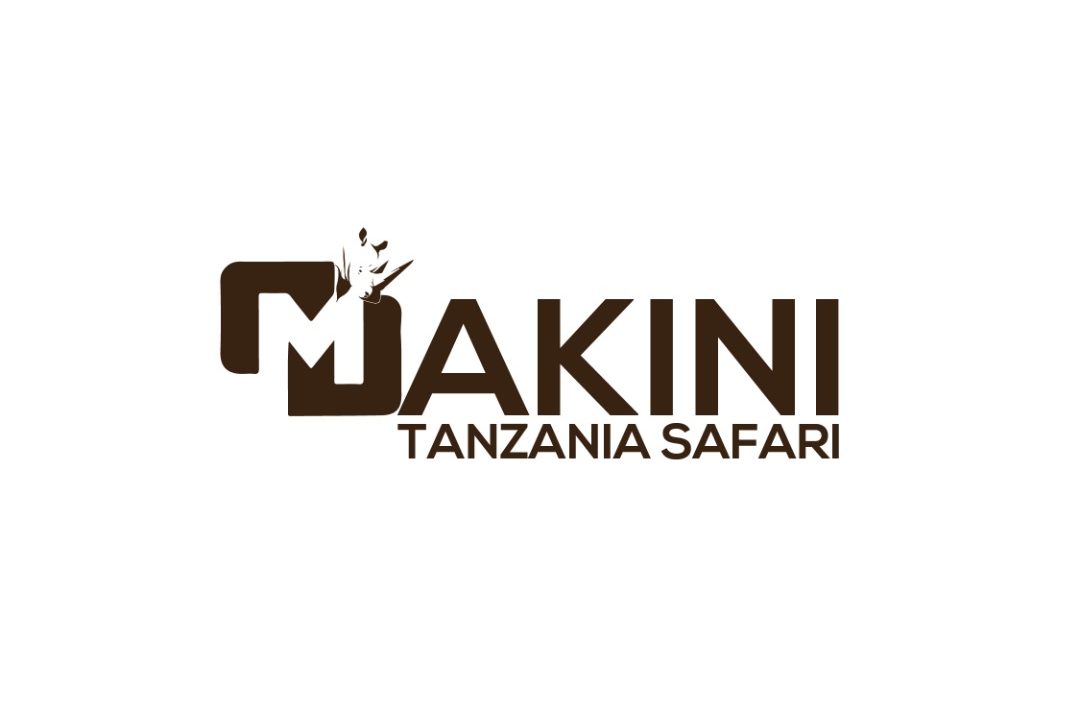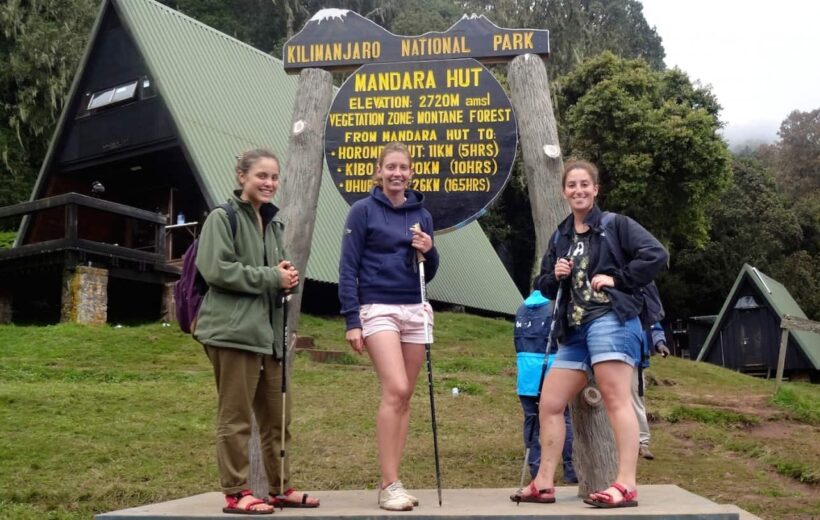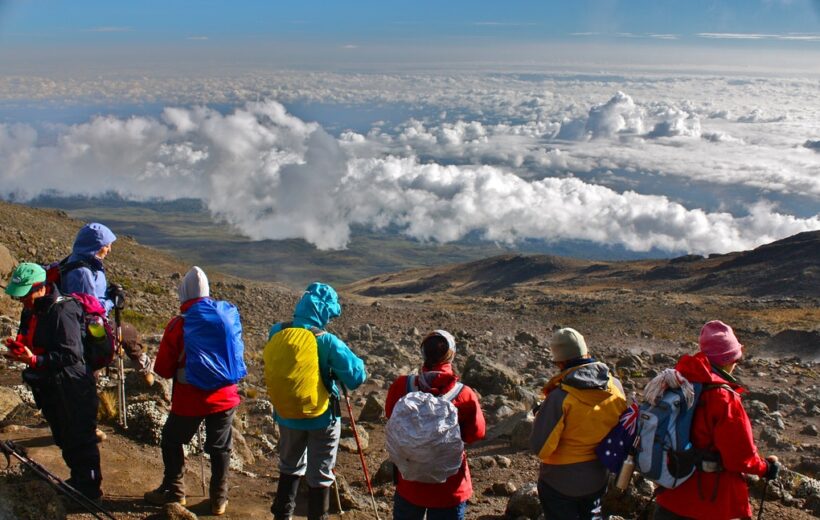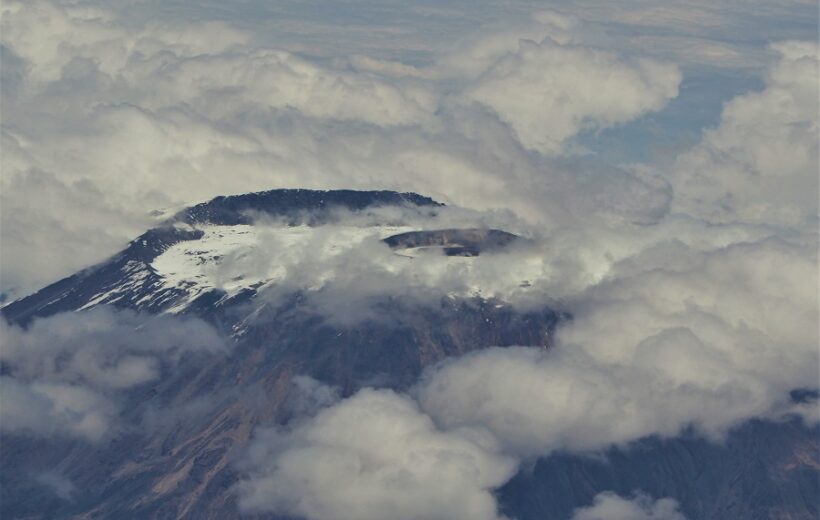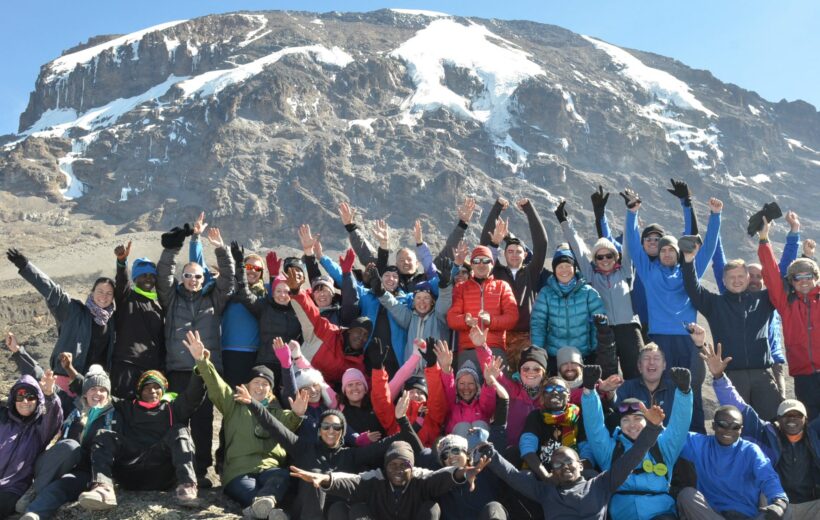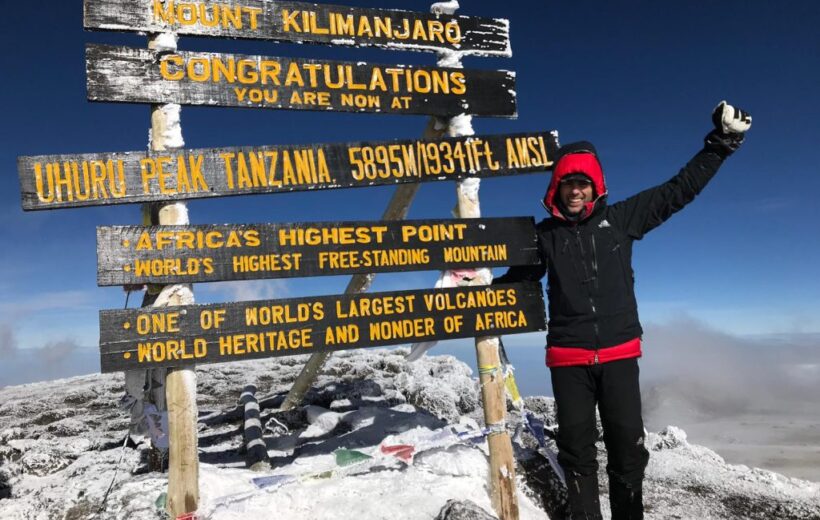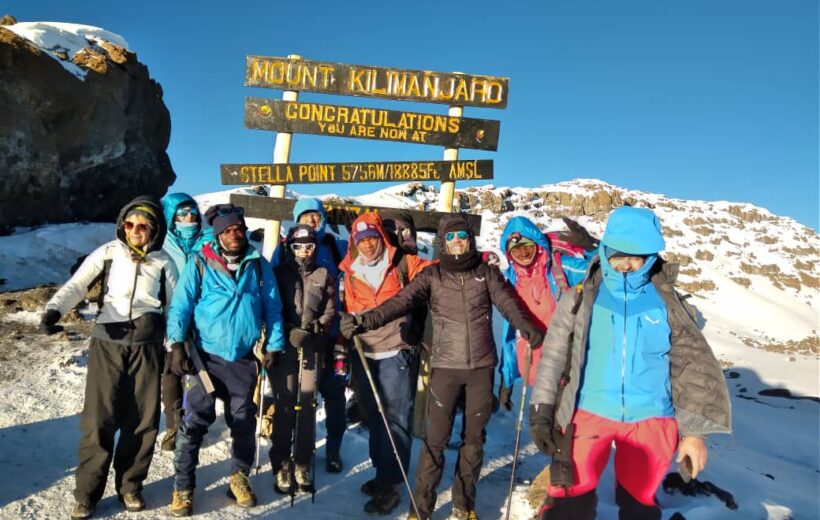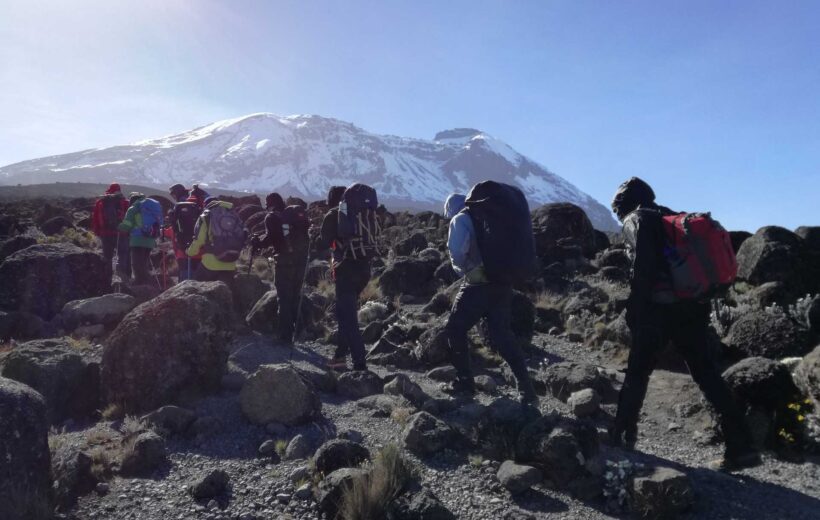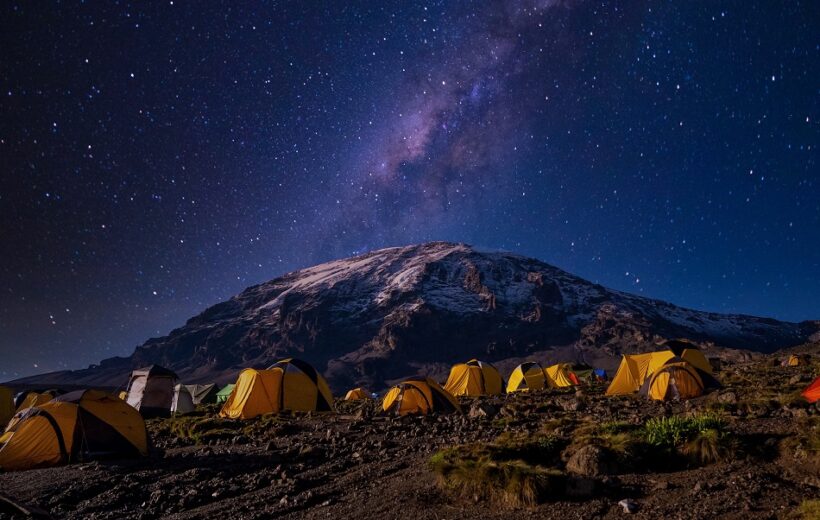Overview
Kilimanjaro is a dormant volcano in northern Tanzania that covers a total area of 1,688 square kilometres (652 sq. mi, it stands at 5896m and is the highest peak in the whole African continent. It is also the highest free-standing mountain in the world and one of the world’s highest volcanoes. The mountain has three volcanic peaks which are Kibo, Shira and Mawenzi.
The park was established as a national park in 1977. Mt Kilimanjaro National Park is among Tanzania’s most visited parks, unlike the other northern parks, this isn’t a place for a wildlife view, although it’s there. Rather, people visit the area to trek the amazing snow-capped mountain on the equator, and to climb to the top of Africa.
Mt Kilimanjaro is located in northern Tanzania next to some of the top safari parks in Africa, so while making a climb it would be a shame not to visit the northern parks and experience the Serengeti, Ngorongoro, Lake Manyara or Tarangire.
Kilimanjaro is one of the world’s most accessible high summits, an ideal for trekkers from around the world. Kilimanjaro is still pristine & a protected area, carefully regulated for climbers to enjoy without leaving a trace of their presence. See the reasons why you should hike Mount Kilimanjaro.
Did you know?
Nearly every kind of ecological system is found on the mountain, cultivated land, rain forest, heath, moorland, alpine desert and an arctic summit (Uhuru).
Mount Kilimanjaro is more popular than the country it’s in (Tanzania)
Before the internet revolution, many travellers thought Mount Kilimanjaro is in Kenya
The Kilimanjaro is one of few places in Africa with permanent snow
HISTORY OF KILIMANJARO NATIONAL PARK.
The history goes back to the early twentieth century when the Mountain and the adjacent forests were announced as a game reserve by the German colonial government.
In 1921, it was designated as a forest reserve and in 1973, the mountain above the tree line (about 2,700 metres (8,900 ft)) was reclassified as a national park.
The park was stated a world heritage site by UNESCO in 1987. In 2005, the park was expanded to include the entire montane forest, which had been part of the Kilimanjaro Forest Reserve.
WHAT TO DO IN KILIMANJARO NATIONAL PARK.
Wildlife Viewing.
Mount Kilimanjaro has an abundance of animals. The park itself is a moorland zone, which means you’ll find lush vegetation with plenty of rainfall. Even at ground level, you’ll still be higher than sea level, so you might have some trouble breathing and adjusting to the altitude.
Easy hikes are available on the moorland, and you might need to be guided by an armed park ranger to reach some areas because of the potential danger from large animals such as buffalos and elephants. A trek will also allow you to see black and white colobus, bush pigs, mongooses, elephant shrew and a number of other animals.
Most visitors who come to the park want to either see or climb Kilimanjaro. Climbing Mount Kilimanjaro is an awesome and lifetime experience, it does not require any technical climbing skills. The easiest climb is via the Rongai Route, which takes six days to get you to the Uhuru summit.
Visit Chala crater lake.
Lake Chala is a caldera lake that lies on the shadows of Mount Kilimanjaro. It gets its clean and cold water from Mount Kilimanjaro. The lake is well known for its wonderfully changing colours. From deepest turquoise to emerald green to azure and all colours in between.
It’s a perfect place to relax and unwind and you will have the chance of hiking the picture-perfect countryside around the lake, swimming in its shiny waters or kayaking across the border to Kenya.
Cycling.
Another awesome activity tourists can do on Kilimanjaro is exploring Mount Kilimanjaro on two wheels. Tourists can make their safari more experimental by cycling to the highest peak of Africa through Kilema route (cycling).
The cycling will let you across the farmlands of Chagga people. This activity is recommended for well-experienced mountain bikes accompanied by a professional Kilimanjaro guide.
Bird watching.
Mount Kilimanjaro hosts different species of birds. It is believed to be home to over 150 bird species some of which are migratory and others are endemic to the area.
Some of the birds found in the Kilimanjaro national park are white-cheeked barbet, white-necked raven, Gabar goshawk, blue napped mousebirds, grey hornbill and capped robin chat.
When to hike the Kilimanjaro.
It’s possible to climb Kilimanjaro Mountain throughout the year, but we recommend avoiding the rainy months. For the best chance of dry conditions, hike between July and October or January to mid-March.
Below is an overview of the weather throughout the year.
January to March (partially rainy).
The end of March to mid-May (long rainy season).
June to August (dry season).
September and October (dry season).
November and December (rainy season).
Getting to Kilimanjaro.
The best airport to fly into is Kilimanjaro international airport, from there our team will pick you up, transfer you to your hotel where you will be collected by the guide before your hike.
